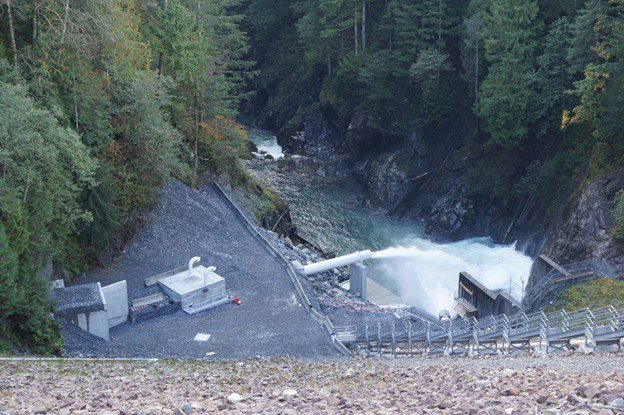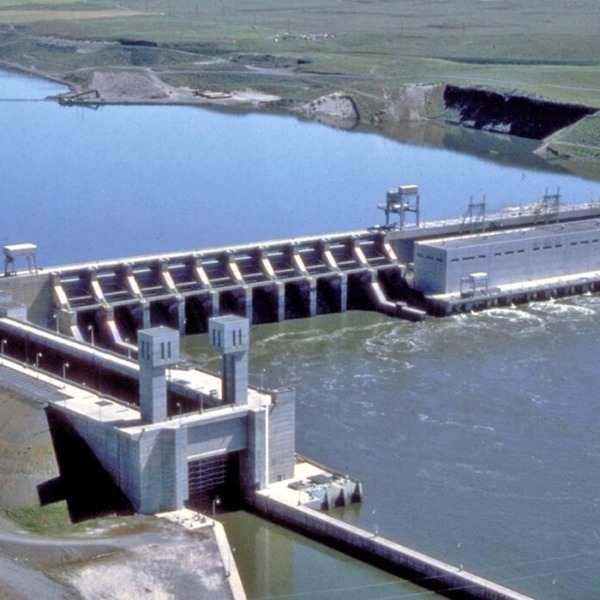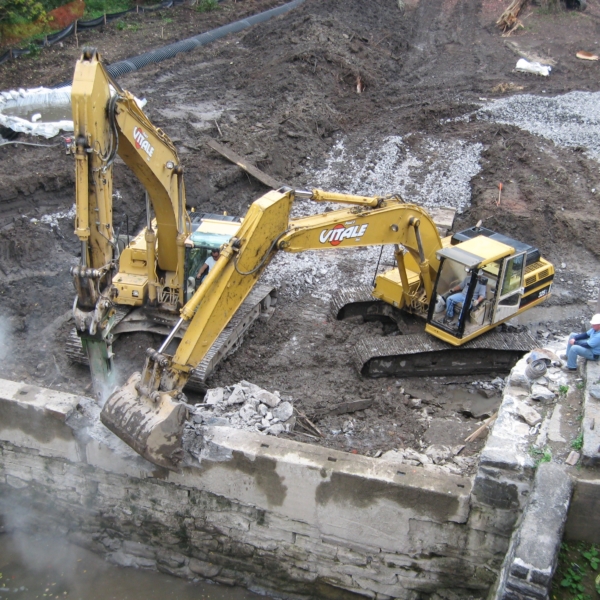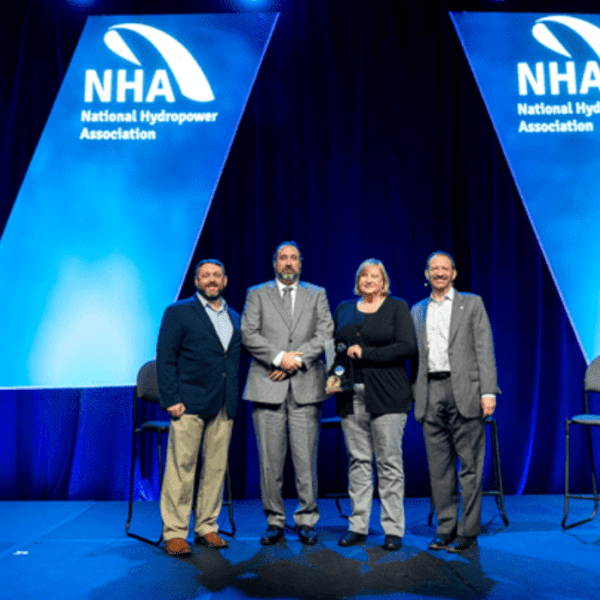Editor’s Note: The work featured in this article demonstrates that hydropower projects go beyond producing carbon-free electricity. The work described here illustrates how hydropower is ensuring healthy fisheries, even in times of climate extremes.
The concept of blending and mixing waters of varying temperatures (known as conditioning) to get an ideal water temperature sounds simple enough. Yet, accomplishing this in an actual river system with water coming in from multiple locations is a complex feat.
Over the past six years, the Snohomish County Public Utility District has created a system at its 111.8-MW Henry M. Jackson Hydroelectric Project to supply water that meets the preferred temperature of species and life stages of fish using the river downstream.
This unique system – which has been operating for six years – is resulting in a healthier fish population. And, as climate change-induced extreme conditions occur (e.g., resulting in water that is too warm from unusually high temperatures and/or water flow that is too low), the utility can use its water conditioning system to adjust temperatures that are allowing fish to thrive, despite the extreme conditions.
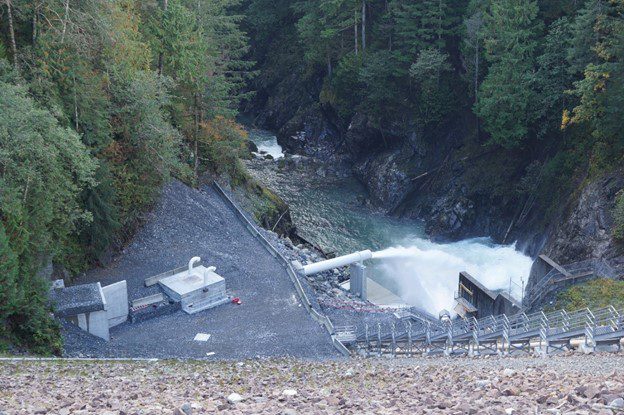
Photo 1. Looking down the face of Culmback Dam and at the new water temperature conditioning structures.
While managing water temperature and its impact on native and migrating fish is a common challenge facing owners of hydropower facilities, the solution for this challenge at the Jackson Project is noteworthy.
The Deep Dive: Why the Need for Temperature Conditioning?
When it came time to apply for a new Federal Energy Regulatory Commission (FERC) license (relicense) at its 111.8-MW Henry M. Jackson Hydroelectric Project in 2009, Washington-based Snohomish County Public Utility District (PUD) noted that the resident fish population above the City of Everett’s Diversion Dam on the Sultan River was limited in distribution, productivity, and size due to the cold water coming from the base of the reservoir (~200 feet deep).
The 6.4-mile-long stretch of the Sultan River in Reach 3 lies within a canyon in the Sultan Basin watershed between the Culmback Dam and the Diversion Dam. The Diversion Dam was installed in 1930 to supply Sultan River waters to the City of Everett; however, this practice prevented fish from passing the dam for a period of nearly 90 years.
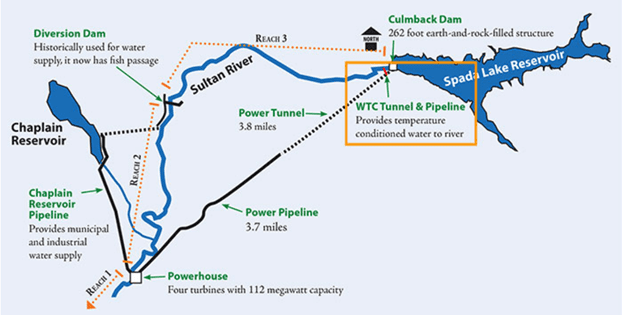
Figure 1. Map of Jackson Project facility locations along the Sultan River’s three reaches.
In its original license, the PUD was required to incorporate a selective withdrawal structure in the design the project intake to facilitate mimicking of the thermal regime present in the river prior to the hydro project and expansion of the reservoir. During this annual period of reservoir stratification, this structure allowed for the delivery of water to the reaches of the lower river (Reach 1 and Reach 2) occupied by anadromous fish in a manner that better reflected the natural temperatures found seasonally in the Sultan River.
Reach 3, the reach inaccessible to anadromous fish, remained cold as water delivery was principally from a valve located at the base of the dam. Under the new license (relicense), as an immediate and intermediate step toward improving water temperature conditions, Phase 1 of the Water Temperature Conditioning Plan was implemented. Phase 1 would improve conditions for the resident fishery, as well as macroinvertebrates and other aquatic life, by providing limited water temperature conditioning using existing plumbing and a new upsized valve. Phase 2 would go into effect once anadromous fish accessed the upper reach. Phase 2 would involve providing increased minimum flows and enhanced temperature conditioning potential.
As part of the relicensing requirements, the PUD also was tasked with providing volitional fish passage at the City of Everett’s Diversion Dam to provide migrating anadromous fish unencumbered access into Reach 3 once certain spawning utilization criteria were met in the reaches downstream of the Diversion Dam.
Within two years of the issuance of the new license, the criteria for providing fish passage were met and the PUD actively pursued passage and the subsequent Phase 2 water temperature conditioning.
With fish passage conditions in place and volitional access for anadromous fish to Reach 3 provided, another challenge arose: Water temperatures in Reach 3 were still too cold under Phase 1 for the newly introduced migrating fish, which could negatively affect their growth, condition, and reproductive success. In response, the utility got to work evaluating what it would take to manage water temperatures and protect both native and migrating fish.
The Solution
Though the project was originally licensed by FERC in 1961, the reservoir was built for water supply but the construction of the hydroelectric portion of the facilities were postponed due to a lack of energy resource needs at that time. The PUD constructed the remaining generation facilities in 1984. At that time, local and environmental agencies requested the utility address water temperatures in Reaches 1 and 2, so the selective withdrawal structure in the reservoir was constructed to manage temperatures.
“When the project was converted from a water supply facility to a hydropower facility in the 1980s, we built the selective withdrawal structure that allowed us to provide temperatures in the range of what is natural for the lower two reaches of the Sultan River that we deliver water to,” says Snohomish County PUD’s Manager of Natural Resources Keith Binkley. “That left the upper reach subject to temperatures that were too cold for the resident fish population between Culmback Dam and Diversion Dam since the water was being delivered from the base of reservoir. The withdrawal structure gave us interesting options to deliver temperature control to Reach 3.”
Enter development of a sophisticated water temperature conditioning structure.
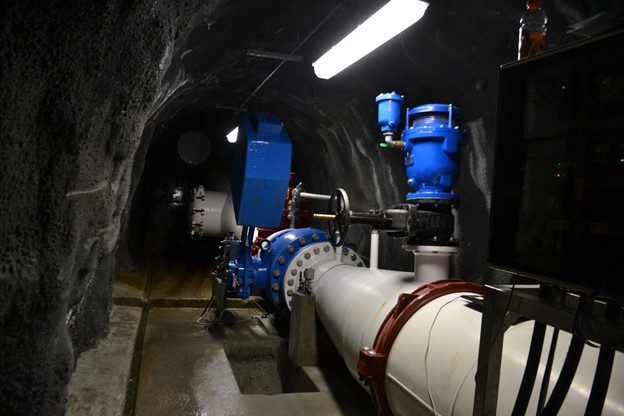
Photo 2. Inside the tunnel that houses the pipes that deliver water to just below Culmback Dam for water temperature conditioning.
A 715-foot-long tunnel was constructed between the existing power tunnel from the withdrawal structure and the base of the Culmback Dam. Some of the water traveling through the new tunnel would be diverted to Reach 3.
The intake for the system is located near Culmback Dam in the reservoir. A series of panels that can be moved higher or lower in the reservoir to capture colder or warmer water when the reservoir is stratified in temperature (typically from April through October) and thus pass through Reach 3. This water is then blended with water exiting the Phase 1 valve at the base of the reservoir.
The Phase 2 water temperature conditioning structure was complete in November 2018, ensuring year-round adherence with the license and state water quality criteria identified in the 401 Water Quality Certificate. “We have constructed a state-of-the-art structure. We’re working with a modern facility when it comes to temperature control,” said Binkley.
The PUD uses a variety of instruments, data loggers, and modeling tools to measure and monitor snowpack conditions and reservoir temperature profiles and to quantify the variable influence of solar conditions and air temperatures on the bedrock prevalent within the canyon.
“While we initially developed the water temperature conditioning program to warm the water in Reach 3 for resident fish, we’ve already used it to cool the water due to high air and river temperatures these last couple summers. This will provide a valuable tool as we continue to combat climate change in the future, by releasing water temperatures that are optimal for fish from late spring through early fall,” noted Dawn Presler, Senio. Environmental Coordinator at the PUD.
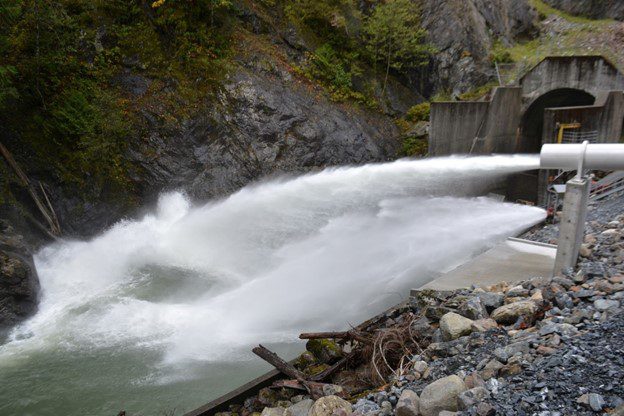
Photo 3. Warmer water delivered from the water temperature conditioning pipes is blended with cooler water delivered from the base of the dam.
Results – How Has the Fishery Reacted?
The water conditioning structure was expected to stimulate primary productivity, increase macroinvertebrate production, improve fish growth, expand fish distribution, and add resiliency to the fish population in the Sultan River.
The initial results from Phase 1 are in and they are certainly impressive — the fish are responding to the controlled water temperatures. In fact, a variety of salmonid species have used the stretch at several life stages. Some stocks are using the reach throughout the year for rearing and even overwintering.
The PUD has implemented a monitoring plan to include hydroacoustic detection to document the timing, species, and number of fish migrating past the Diversion Dam for spawning. Snorkel surveys identify species, size, and distribution of fish in the reach. The utility determined that measuring fork length was the best route to determine improved fish growth, and scale samples for fish age.
Through a trapping effort conducted between 2010 and 2016, the utility measured the fork length of rainbow trout pre- and post-water temperature conditioning Phase 1. Results showed:
- ~4% increase in fork length of trout aged 2
- ~14% increase in fork length of trout aged 3
- ~16% increase in fork length of trout aged 4
Resident trout will be monitored again in 2022. Phase 2 monitoring will begin in 2022 to ensure that the fish collected will have spent their entire lives under Phase 2 conditions. Age, fork length, river temperature, accumulated number of temperature units (ATUs), and distribution data will be analyzed.
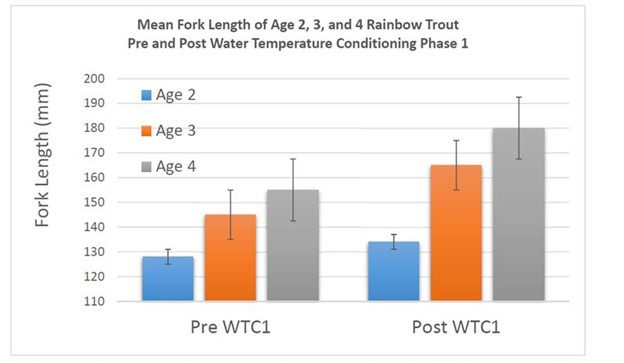
Figure 2. Length at age of rainbow trout captured prior to, and after, implementation of water temperature conditioning Phase 1.
In addition to trout data, anadromous fish data will also be collected to assess Phase 2 water temperature conditioning. Data from spawner surveys and hydroacoustic technology and smolt trap deployments at the Diversion Dam will help identify the relative abundance of spawning adults and the timing of redd development subsequent outmigration from Reach 3. Data will be compiled, analyzed, and shared in late 2022/early 2023 with the Project’s Aquatic Resource Committee comprised of federal, state, and tribal representatives.
“When pink salmon are present every other year, they are prevalent migrating in large numbers. When this occurs, other fish including Chinook redistribute and have found this stretch to be accommodating,” said Binkley. “It’s been wonderful to see fish populations expanding their distribution and utilizing this new landscape in Reach 3. This serves to bolster population resiliency.”
In 2019, the National Hydropower Association honored Snohomish County PUD with an Outstanding Steward of America’s Waters award for Operational Excellence.



